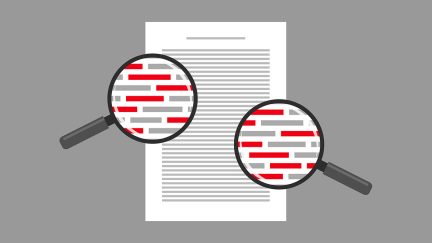For more stories like this, sign up for the PLANSPONSOR NEWSDash daily newsletter.
Deemed Distributions Can Be Triggered by More Than Just Loan Nonpayment
The IRS reminds retirement plan sponsors of rules that, if broken, can result in loan amounts being deemed distributions.
An IRS Issue Snapshot reminds plan sponsors about failures that will cause a participant loan, or a portion of the loan, from a qualified retirement plan to become a deemed distribution for tax purposes.
Plan sponsors might be most familiar with the failure that occurs when a participant loan goes into default if payments are not made. But the IRS says failures also could occur when participant loans exceed the maximum dollar amount, have payment schedules that do not meet the time or payment requirements, or are not legally enforceable agreements.
According to the Issue Snapshot, a participant loan must be a legally enforceable agreement, which may include more than one document, and the terms of the agreement must demonstrate compliance with the requirements of Internal Revenue Code (IRC) Section 72(p)(2) and Treasury Regulation Section 1.72(p)-1. These require the agreement to specify the amount and date of the loan as well as the repayment schedule. The IRS says the agreement does not have to be signed if it is enforceable under applicable law without being signed; however, it must be set forth in a written paper document or in a document that is delivered through an electronic medium under an electronic system.
IRC Section 72(p)(2)(A) provides that a participant loan, when added to the outstanding balance of all other loans to the participant from all the employer’s plans, may not exceed the lesser of:
- $50,000, reduced by the excess (if any) of—
- the highest outstanding balance of loans from the plan during the one-year period ending on the day before the date on which such loan was made, over
- the outstanding balance of loans from the plan on the date on which such loan was made, or
- The greater of either 50% of the participant’s vested accrued benefit or $10,000.
IRC Section 72(p)(2)(B) states that the repayment period of the plan loan must be limited to five years unless the loan is used to purchase a dwelling unit which will, within a reasonable amount of time, be used as the principal residence of the participant. In addition, IRC Section 72(p)(2)(C) requires substantially level amortization over the term of the loan, with payments occurring not less frequently than quarterly. The Issue Snapshot discusses the few exceptions to this requirement.
If any of these requirements is not met, a deemed distribution will occur.
According to the Issue Snapshot, if the loan terms violate the repayment term requirement or the level amortization requirement or if there is no legally enforceable agreement, the entire loan is considered a deemed distribution on the date the loan is made.
If the amount loaned exceeds the limitations of IRC Section 72(p)(2)(A), then the deemed distribution is the amount by which the loan exceeds the limitations. If the participant failed to make any installment payment when due in accordance with the terms of the loan, then the deemed distribution is the amount of the outstanding balance of the loan, plus accrued interest.
The IRS reminds plan sponsors that the plan may provide a cure period for participants to catch up on missed loan payments. It also reminds plan sponsors that the Coronavirus Aid, Relief and Economic Security (CARES) Act of 2020 increased the allowable loan amount for loans made to a qualified individual on or after March 27, 2020, and before September 23, 2020. The bill also provided for an extension of payment terms.
The IRS Issue Snapshot is at https://www.irs.gov/retirement-plans/deemed-distributions-participant-loans.
You Might Also Like:
IRS Issues 2025 Required Amendments List for Qualified Plans, 403(b)s
IRS, Treasury Offer Updates on How Trump Accounts Will Work
Delayed Release of 2026 Contribution Limits Unlikely to Cause Many Problems
« SURVEY SAYS: Does Your Employer Track Remote Employee Activity?



